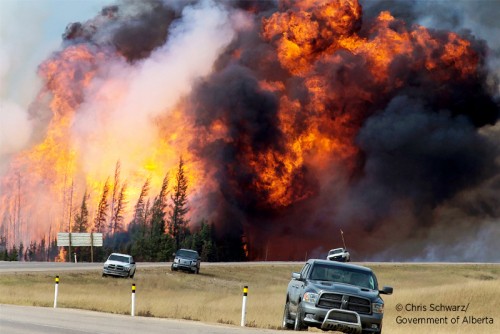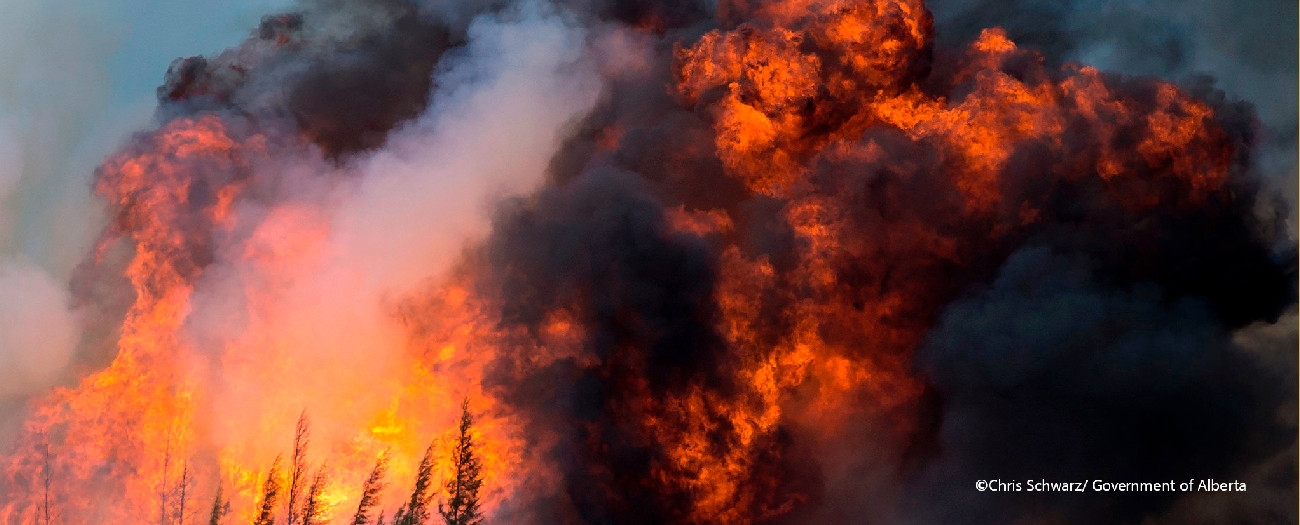The Fort McMurray wildfires proved that even a strong emergency response can be made stronger
Alberta - May 15, 2017
The cozy smells of coffee, melted butter, and maple syrup from a Mother’s Day breakfast still wafted through the air when Colin Woods got the call.
Without asking questions, the manager of the AER’s Alberta Energy Regulator’s (AER) Bonnyville Field Centre immediately drove some 400 kilometres northward to support the response to the Fort McMurray wildfires that had taken over the city earlier that week.
“There’s only one way to describe that highway on that drive, which is normally buzzing with traffic, and that’s ‘creepy,’” says Woods. “I counted 156 abandoned vehicles on my way to Fort Mac—people just ran out of fuel fleeing to safety.”
The sight prompted him to create a new personal rule for his family: never begin a road trip with less than a third of a tank of gas. That was just one lesson that Woods and other AER staff would learn from the ordeal of responding to the destructive fires.
Woods’s time in the Provincial Operations Centre also taught him that despite all of the successes of Alberta’s response to The Beast—no deaths, and much of the city and all of its critical infrastructure was saved—we must not overlook the valuable lessons learned.
For the AER those lessons include, always go big, but go as one. This is where the incident command system—a widely-accepted, standardized system used in both small and large incidents—came into play. By having the right system in place and people trained in the system, the AER’s response was more effective and efficient.
That said, the AER will be making changes to its own response processes to ensure they are even more efficient for the next time, says Tosha Richter, lead of the AER’s Business Continuity Program.
From Richter’s perspective, the AER’s various divisions and branches were quick to respond, but they didn’t always connect with one another as they worked, which sometimes resulted in a duplication of efforts.
“We are fantastic at responding to unplanned events,” says Richter. “We have the knowledge and talent, but the wildfires taught us that we need to be better at tapping into our own resources.”
The fire also highlighted the importance of strong relationships, both within the AER and with our partners. The Alberta Emergency Management Agency (AEMA) refers to this as the “speed of trust,” which simply means that when the heat is on, you have full trust in the people working with you, which allows you to move faster than fast—at the speed of trust.
“To work at the speed of trust takes a lot of work before the emergency phase,” explains Scott Long, executive director of the AEMA. “It’s relationship building. It’s stakeholder engagement. It’s getting to know the people you’ll be working with and building a rapport with them before there’s an actual emergency.”
Long also notes that, as seen with the 2016 wildfires, industry stakeholders are important partners to include in the speed of trust.
With the one-year anniversary of the Fort McMurray wildfires just behind us, many of those involved are still studying the response and developing ways to apply what they learned to the next emergency. All things being equal, the response was a huge win.
“Considering the size, scope, and number of people involved in the response efforts, things ran really smoothly,” Woods says.
Cassie Naas, Writer


